Georgios D. Evangelidis
Fusion of Range and Stereo Data for High-Resolution Scene-Modeling
Dec 12, 2020

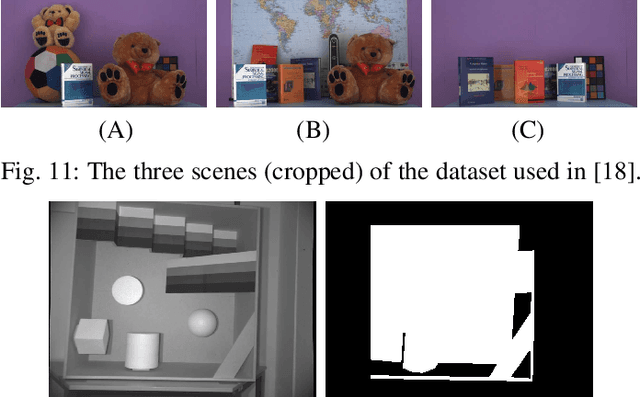
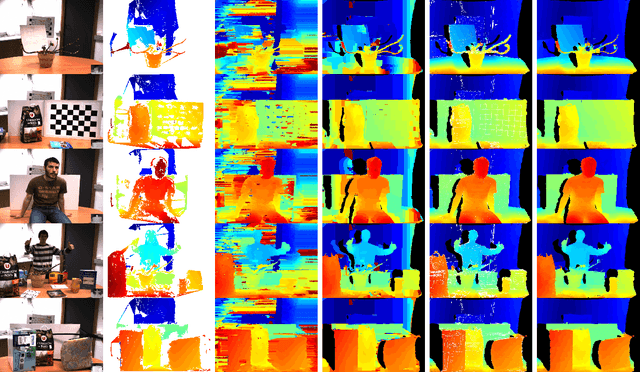
Abstract:This paper addresses the problem of range-stereo fusion, for the construction of high-resolution depth maps. In particular, we combine low-resolution depth data with high-resolution stereo data, in a maximum a posteriori (MAP) formulation. Unlike existing schemes that build on MRF optimizers, we infer the disparity map from a series of local energy minimization problems that are solved hierarchically, by growing sparse initial disparities obtained from the depth data. The accuracy of the method is not compromised, owing to three properties of the data-term in the energy function. Firstly, it incorporates a new correlation function that is capable of providing refined correlations and disparities, via subpixel correction. Secondly, the correlation scores rely on an adaptive cost aggregation step, based on the depth data. Thirdly, the stereo and depth likelihoods are adaptively fused, based on the scene texture and camera geometry. These properties lead to a more selective growing process which, unlike previous seed-growing methods, avoids the tendency to propagate incorrect disparities. The proposed method gives rise to an intrinsically efficient algorithm, which runs at 3FPS on 2.0MP images on a standard desktop computer. The strong performance of the new method is established both by quantitative comparisons with state-of-the-art methods, and by qualitative comparisons using real depth-stereo data-sets.
K-means clustering for efficient and robust registration of multi-view point sets
Apr 30, 2018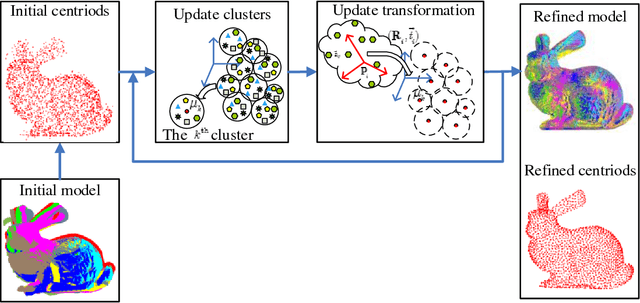
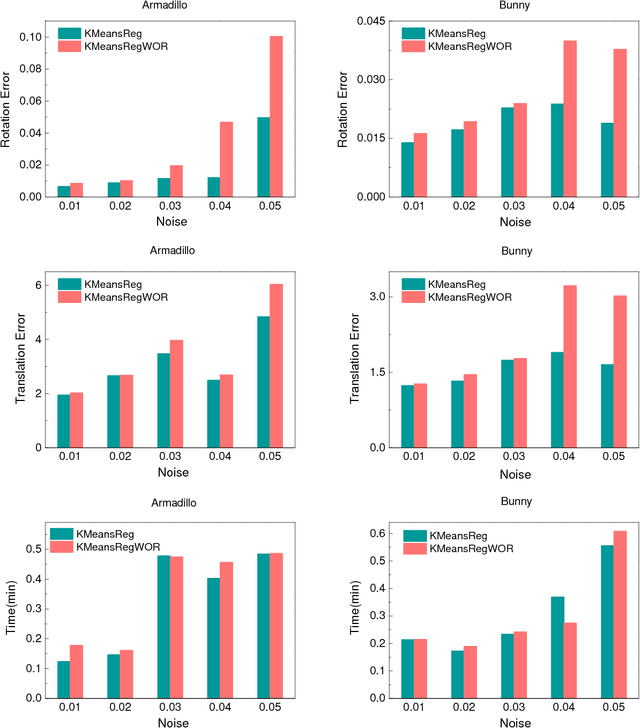
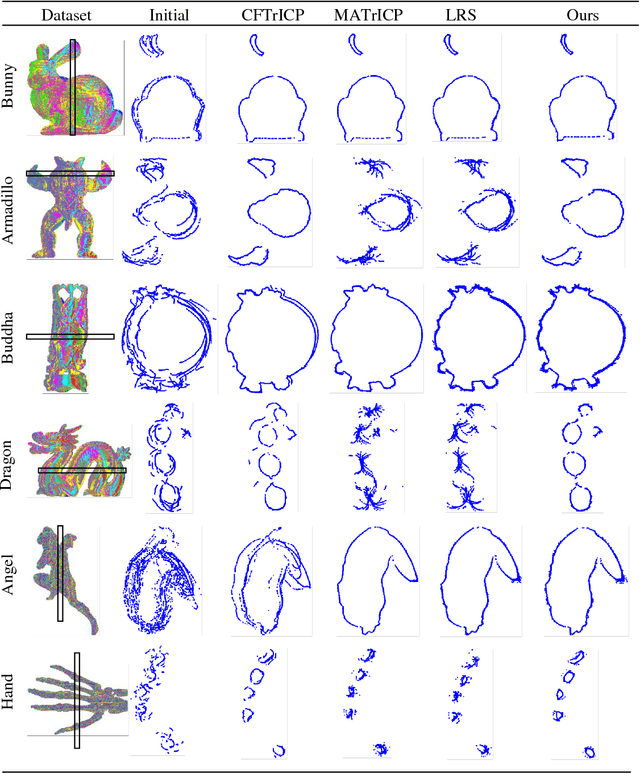
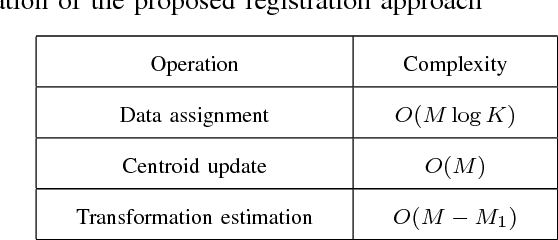
Abstract:Generally, there are three main factors that determine the practical usability of registration, i.e., accuracy, robustness, and efficiency. In real-time applications, efficiency and robustness are more important. To promote these two abilities, we cast the multi-view registration into a clustering task. All the centroids are uniformly sampled from the initially aligned point sets involved in the multi-view registration, which makes it rather efficient and effective for the clustering. Then, each point is assigned to a single cluster and each cluster centroid is updated accordingly. Subsequently, the shape comprised by all cluster centroids is used to sequentially estimate the rigid transformation for each point set. For accuracy and stability, clustering and transformation estimation are alternately and iteratively applied to all point sets. We tested our proposed approach on several benchmark datasets and compared it with state-of-the-art approaches. Experimental results validate its efficiency and robustness for the registration of multi-view point sets.
 Add to Chrome
Add to Chrome Add to Firefox
Add to Firefox Add to Edge
Add to Edge